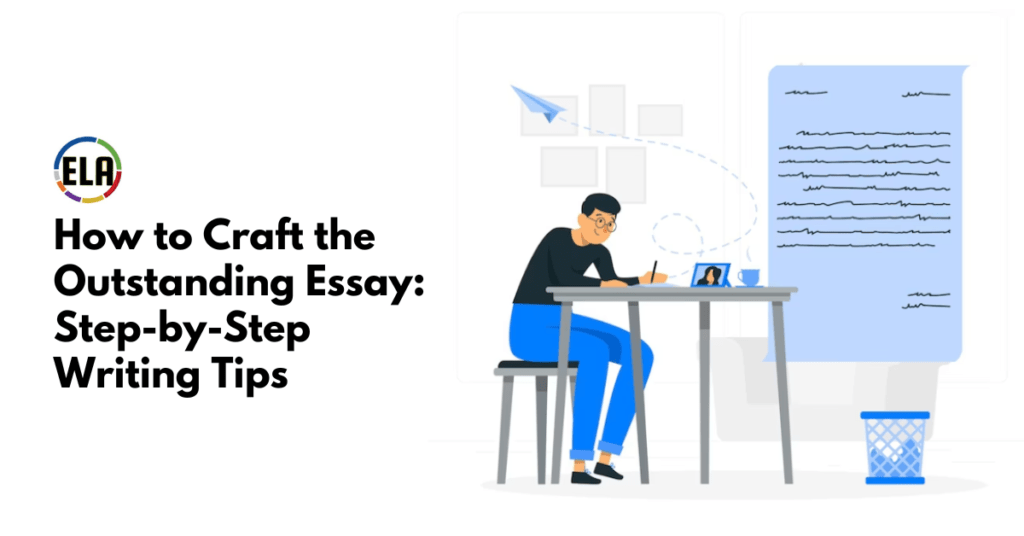When it comes to writing an essay, do you ever find yourself staring at a blank page and not knowing where to start?
Do you find it difficult to put your ideas into order and communicate them clearly?

It’s not just you!
Writing essays can be difficult for many students, but don’t worry!
It can be challenging to write an excellent essay, but it doesn’t have to be. You may write an impressive essay that will wow your professors and fellow students with a little forethought and work.
We will lead you through the steps of writing an excellent essay in this guide. Everything from
Selecting a topic to edit your finished essay will be covered. You will be well on your way to creating an essay that is both educational and interesting if you follow these suggestions.
So get ready to quickly develop your writing skills as an essayist!
Empowering Students with Diverse Educational Resources
We have discovered Doksi.net, a valuable document sharing Site designed specifically for students. This site offers an extensive collection of resources, covering a wide array of subjects and topics.
Whether you’re a student seeking academic materials in fields like agriculture, biology, information technology, or medical knowledge, Doksi.net provides a rich repository of documents and information to support your educational journey. With its diverse range of content, this website aims to empower students with the knowledge and resources they need to excel in their studies and research.
Pre-writing Steps: Organization and Planning
Making a fantastic essay requires laying a solid foundation. The pre-writing phase, which focuses on organization and planning, establishes the framework for your essay.
Recognize the Essay Topic or Prompt
When beginning to write, it is essential to select and comprehend the essay topic completely.
Read and consider the prerequisites, directions, and any added guidelines with care.
Determine the prompt’s essential elements, such as:
- The primary query or concern to be addressed
- The subject’s range
- Any particular guidelines for the essay
Select the Essay Type
Choosing the type of essay you must write is the next step. The first step to writing a successful essay is selecting the appropriate essay type.
These are the major categories into which all academic essays fall.
- Descriptive Essay: In a descriptive essay, the subject is thoroughly discussed to make it clear to the reader what is being discussed.
- An essay that tells a story in the form of a narrative is referred to as a narrative essay.
- A persuasive essay persuades the reader to agree with your point of view on the essay’s subject.
- Expository Essay – An expository essay uses excellent details and examples to explain and clarify the topic.
Choosing a topic and drafting an essay is made easier when you are aware of the type of essay you must write. The additional essay types that you should be familiar with are listed below.
- The argumentative essay
- Analytical essay
- Cause and Effect essay
- Classification essay
- Synthesis essay
- Essay on Contrast and Comparison
In-Depth Research
Every well-written essay is built on research. Collect pertinent data from trustworthy sources like books, scholarly journals, reputable websites, and scholarly databases. As you conduct research, make notes to help you organize your ideas.
Create an Outline to Help You Structure Your Essay
An outline serves as the basic structure of your essay, giving you a clear framework within which to write. It assists you in answering questions about the format of an essay and guarantees that your essay has a clear, logical flow.
Start by dividing up your main points or subtopics into paragraphs or sections. Then, make a list of the arguments, proof, or examples you’ll use to support each main point.
Have you ever wondered how to create an essay outline? Here is an example of a five-paragraph essay outline.
Writing Process: Crafting Your Essay
Writing involves developing an interesting introduction, body, and conclusion. Let’s go over how to craft each section step by step.
Write the Introduction
The first paragraph of your essay should be an introduction. Your introduction should provide background information on the subject of your essay for the reader.
Here is what an interesting introduction consists of if you’re wondering how to write an essay introduction:
Activating Hook
Consider using a strong hook to grab the reader’s interest right away.
This can be an intriguing question, a startling fact, a pertinent quotation, or an anecdote.
The intention is to pique interest and encourage reading further.
Background Info
After drawing the reader in, give them some context or background information about the subject of your essay.
The reader will be better able to comprehend the subject’s importance and relevance as a result of this.
It might include background information from the past, pertinent data, or a summary of the current situation.
Statement of the Thesis
Finish the introduction with a thesis statement that captures the main point of your essay and is succinct and clear.
The thesis statement should outline your position and serve as a road map for the body paragraphs that follow.
Summarize Key Points
Give a concise recap of the main ideas covered in the body paragraphs in the conclusion. Remind the reader of the key points and supporting data used to support them throughout the essay.
An online tool called Text Summarizer helps us quickly and accurately create error-free summaries. You would only need to “enter” or “upload” your content and press the summarise button if you used our summary generator. The online text summarizer will quickly and accurately summarize it using sophisticated Al algorithms.
Check for Grammar and Spelling Mistakes
It’s critical to carefully proofread your essay after you’ve finished the first draught to catch any grammatical, spelling, or punctuation errors.
This step guarantees that your writing is polished, clear, and professional.
Verify for Coherence and Clarity
Examine the logical progression of your arguments and the way your ideas flow through your essay with a critical eye.
Make sure that every sentence and paragraph adds to the essay’s overall coherence.
To improve the essay’s readability and clarity, look for any information gaps or jarring transitions and make the necessary revisions.
Common Mistakes to Avoid When Writing an Essay
As a novice, there is a good chance that you will make errors in your essay. However, if you practice some fundamentals, you can prevent them.
We have listed a few typical mistakes made by non-native speakers below.
- Passive voice usage
- Including long sentences
- Including faulty or missing transitional sentences
- Check plagiarism to ensure essay originality, authenticity, and prevent accidental plagiarism.
- Failing to adhere to the assignment’s guidelines
- Ignoring the subjective-objective agreement for pronouns
- Missing or incorrect citation references
- Using questionable sources
You can also watch this comprehensive video guide on essay writing mistakes to avoid!
Conclusion
Writing a stellar essay requires thorough pre-writing techniques, a clear outline, and an understanding of different essay types. A compelling introduction, hook, background details, and thesis statement capture readers’ attention. Proofreading for grammar and spelling mistakes ensures coherence and clarity, avoiding common errors. By following these techniques, you can confidently write compelling essays for academic and professional success.
